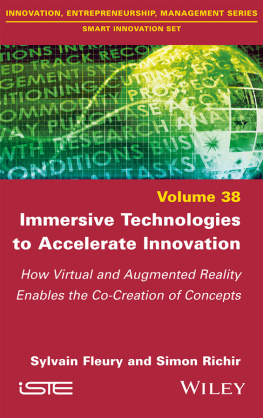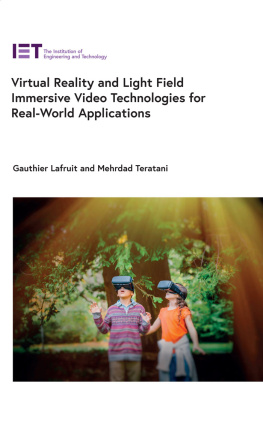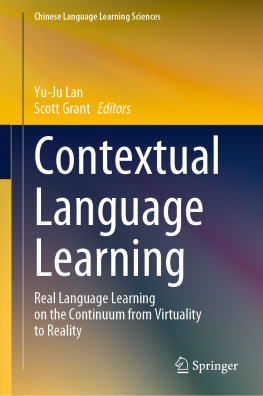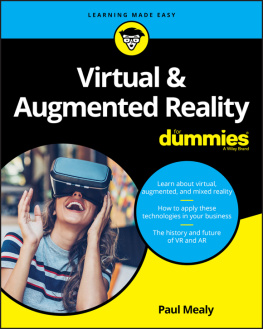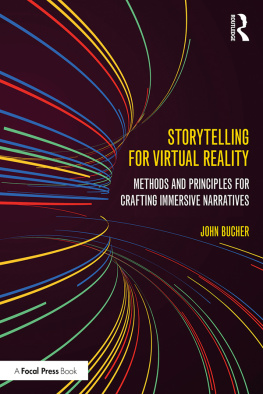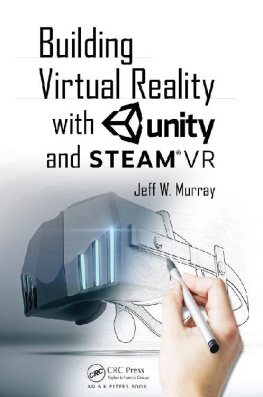
Conceptualising Immersive Journalism
This book presents the history of virtual reality and its introduction into journalism, exploring the challenges posed by pushing to make the experience of news a full body event. The problem of interpretation versus objectivity is discussed, as well as the associated ethical responsibilities.
Immersive journalism offers the vicarious reliving of a news event with the full body through virtual reality technologies. As virtual reality devices become more accessible, major news organisations such as The New York Times , The Guardian , Al Jazeera, CNN, and many more, are starting to experiment with this new form of journalism. This book discusses theoretical issues significant to immersive journalisms goal of using virtual reality to transport audiences into a news site. These include ethical issues concerning image manipulation and the place of the audiences body in the presentation of a news event. To approach these issues, the book presents foundational concepts of VR technologies that have helped establish the achievability of being virtually present in a simulated reality, as well as current research about immersive medias manipulative potential. Using a case-based analysis of how immersive journalism clashes or coincides with the goals of journalism in democratic societies, the book examines the possibilities and ethics of such experiences in journalism and news.
Original and intellectually provocative, Conceptualising Immersive Journalism is an important study of this emerging field for students, scholars and researchers in the areas of Journalism and Media Studies.
Ana Luisa Snchez Laws is Associate Professor in Media at the Faculty of Media and Journalism, Volda University College, Norway. Her articles include Can Immersive Journalism Enhance Empathy? in Digital Journalism , and Ethics Guidelines for Immersive Journalism, co-authored with Tormod Utne, in Frontiers in Robotics and AI.
Disruptions: Studies in Digital Journalism
Series editor: Bob Franklin
Disruptions refers to the radical changes provoked by the affordances of digital technologies that occur at a pace and on a scale that disrupts settled understandings and traditional ways of creating value, interacting and communicating both socially and professionally. The consequences for digital journalism involve far-reaching changes to business models, professional practices, roles, ethics, products and even challenges to the accepted definitions and understandings of journalism. For Digital Journalism Studies, the field of academic inquiry that explores and examines digital journalism, disruption results in paradigmatic and tectonic shifts in scholarly concerns. It prompts reconsideration of research methods, theoretical analyses and responses (oppositional and consensual) to such changes, which have been described as being akin to a moment of mind-blowing uncertainty/
Routledges new book series, Disruptions: Studies in Digital Journalism , seeks to capture, examine and analyse these moments of exciting and explosive professional and scholarly innovation that characterise developments in the day-to-day practice of journalism in an age of digital media, and that are articulated in the newly emerging academic discipline of Digital Journalism Studies.
Making NonProfit News
Market Models, Influence and Journalistic Practice
Patrick Ferrucci
Conceptualising Immersive Journalism
Ana Luisa Snchez Laws
For more information, please visit: www.routledge.com/Disruptions/book-series/DISRUPTDIGJOUR
Conceptualising Immersive Journalism
Ana Luisa Snchez Laws
First published 2020
by Routledge
2 Park Square, Milton Park, Abingdon, Oxon OX14 4RN
and by Routledge
52 Vanderbilt Avenue, New York, NY 10017
Routledge is an imprint of the Taylor & Francis Group, an informa business
2020 Ana Luisa Snchez Laws
The right of Ana Luisa Snchez Laws to be identified as author of this work has been asserted by her in accordance with sections 77 and 78 of the Copyright, Designs and Patents Act 1988.
All rights reserved. No part of this book may be reprinted or reproduced or utilised in any form or by any electronic, mechanical, or other means, now known or hereafter invented, including photocopying and recording, or in any information storage or retrieval system, without permission in writing from the publishers.
Trademark notice : Product or corporate names may be trademarks or registered trademarks, and are used only for identification and explanation without intent to infringe.
British Library Cataloguing-in-Publication Data
A catalogue record for this book is available from the British Library
Library of Congress Cataloging-in-Publication Data
A catalog record has been requested for this book
ISBN: 978-0-367-18941-9 (hbk)
ISBN: 978-0-429-19939-4 (ebk)
Typeset in Times New Roman
by Deanta Global Publishing Services Chennai, India.
To Kamilla and Luna, for all the beautiful journeys to parallel worlds.
With deepest gratitude to my colleague Tormod Utne for introducing me to the fascinating field of digital journalism.
Imagine this scenario: you have just been sent on a mission to a remote location. Elections in your home country will take place soon, you need to cast your vote in a few weeks, and you are still undecided about who to vote for. You scroll through the newsfeed in your mobile trying to find out more, but there is too much information it all seems somewhat haphazard, a confusing melange in an endless stream of news. Now imagine that you could go back home to meet the candidate you are interested in, and perhaps even ask that candidate some hard questions face to face. Or that you could go to your own community and feel what the election mood is in the streets, go to election events and talk to people you trust, and meet representatives that can explain their party policies in more detail. What if a journalist approached you with an immersive journalism device that would let you do just that: be virtually transported from your remote location to an election rally at home? This device, the journalist tells you, could help you gain a broader understanding, more engagement and even increased empathy for the people affected by a news event (de la Pea et al. 2010). You would have unprecedented access, a more faithful duplication of real events, and a uniquely different level of understanding that was higher than that of the printed word (de la Pea et al. 2010). Wouldnt that be fantastic?
The term immersive journalism was first launched in a seminal article in 2010 by a team of researchers from journalism, psychology and human computer interaction disciplines led by Nonny de la Pea. In their article, these researchers presented a series of experiments with virtual reality (VR, which can be defined as a real or simulated environment in which a perceiver experiences telepresence) and its potential applications for journalism. These experiments showed how VR could produce exactly the scenario wished for above: the vicarious reliving of a news event with the full body, in an experience where one would feel more present and thereby more encouraged to understand a news event one cared about.


